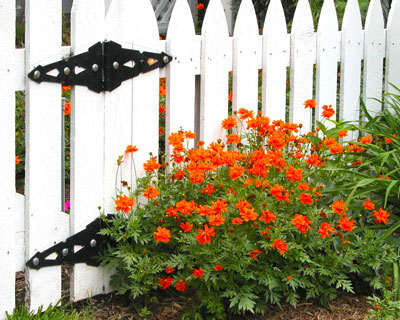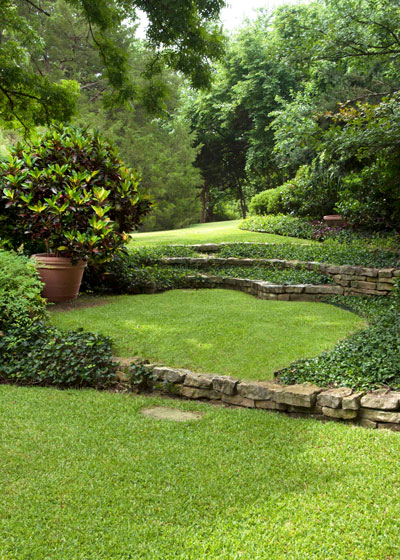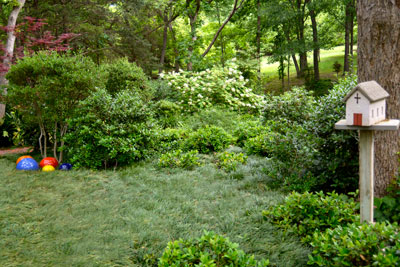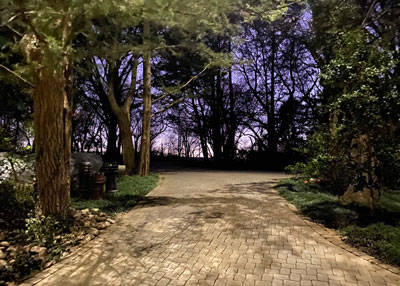Landscaping Part of a Large Space
When you live on an acre or two and you don’t really want to commit to that size of a landscape, how can you draw a limit to where your garden ends and the rest of the world begins?

Sometimes the easiest way is to outline your landscape with a short fence. Wrought iron or decorative picket fencing works well, but your goal is to define the property without blocking your view through and beyond.
Leave a wide opening that invites the eye to look out and away, but that also provides definition of boundaries. Set wide steppingstones in that opening to separate your turf from the field grasses beyond.
So that’s one way. But it wasn’t the way that I chose for our landscape. That’s because we live toward the bottom of a fairly steep hill. The front of our house looks up that hill toward the county road, and our back windows look down toward a creek and up the hill on the other side toward our neighbors.
Any fence I might have put up on the south would have looked like a prison enclosure and would have served no possible function 15 feet below eye level to the north toward the creek. So that idea sat on the table.

My solution was to terrace the hill to the south and to let the retaining walls be the lines of demarcation of where I was interested in doing real landscaping and where all I wanted was bermudagrass to help hold the soil.
Not all of my landscaping decisions have worked out this well, but the retaining walls were, for me, brilliant. Now, 40 years later, they’re still standing strong and doing their thing.
Retaining walls to the north of our house, however, would have been way down the hill toward the creek – invisible to the house. To draw my dividing line there I developed beds in which I could plant tall shrubs to create the look of a forested woodland.

As things have matured, we can still see across their tops to the grassy hill on the north side of the creek, but I’m freed of the responsibility of planting and maintaining landscaping all the way down to the creek and up the other side. Our backyard landscaping goes 60 feet into the woods and it stops.

Finally, to address the one remaining photo, our driveway also practices these principles. It narrows as it comes down the steepest part of the hill, guiding guests’ eyes into the main part of our courtyard/driveway.
The drive is almost 40 years old. Pavestone was new to Texas and it had really caught my eye. I asked my friends, noted landscape architects Richard Myrick and Gene Newman, if they would be able to give me a couple of clues as to how I might handle the angles of our house and garage, our Grosbeck Red bricks (I bought the north wall of an old Safeway store in East Dallas) and the various styles and colors of Pavestone.
I actually went to Dick’s house to pick up the plans (a treat in its own right), and he explained that he wanted nothing in straight lines. Tens of thousands of Pavestone pavers and no two in straight lines with one another (except the two at the corner of our front porch).
It was Dick Myrick who drew this constriction through the trees. He’s the one who chose the cobblestone look, and he’s the one who chose this neutral paver color. I took this photo just a few weeks ago in the late evening twilight.
I love this part of our landscape for all it does to separate the more intensely finished part of our gardens from what’s uphill.
